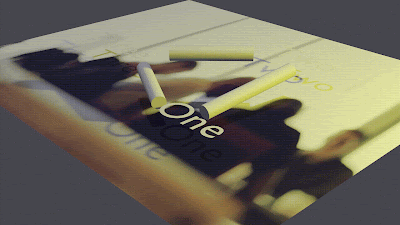In this step-by-step tutorial, you’ll learn how to create and simulate cloth
in Blender, using a simple flag waving in the wind as an example. Cloth
simulations are a great way to add realistic movement to fabrics and soft
materials.
Step 1: Open Blender & Set Up the Scene
- Open Blender.
- Delete the default cube by selecting it and
pressing
X. - Add a plane to act as the cloth:
PressShift + A, go to Mesh and select Plane.
Step 2: Reshape the Plane
- Scale the plane to make it rectangular (like a
flag) by pressing
S, thenXto scale along the X-axis. Drag the mouse until the plane is stretched horizontally. PressEnterto confirm the scale.
Step 3: Subdivide the Plane
- To give
the cloth realistic flexibility, it needs more geometry.
- Select the
plane and go to the Object Mode
(press
Tabto toggle to Object Mode). - With the
plane selected, press
Tabagain to enter Edit Mode. - Right-click
the plane and select Subdivide.
- In the Subdivide options at the bottom-left of the
screen, increase the Number of Cuts
to 20 to add more subdivisions.
Step 4: Add Cloth Physics
- With the
plane still selected, go to the Physics tab
(right-side panel, the icon looks like a bouncing ball).
- Click Cloth to add a cloth simulation to the plane.
- In the Cloth Settings, leave everything as default
for now.
Step 5: Create a Pole for the Flag
- To
simulate a flag, it needs to be attached to a pole.
- Press
Shift + A, go to Mesh, and add a Cylinder. - Scale the
cylinder to make it tall and thin by pressing
S, thenX, and dragging to stretch it along the X-axis. PressEnterto confirm the scale.
Step 6: Pin Part of the Cloth to the Pole
- Select the
plane (flag) and go to Edit Mode
(
Tabkey). - Select the
vertices on the left side
of the flag that will attach to the pole. You can do this by selecting the
top-left vertices, then holding
Shiftand selecting the bottom-left vertices. - With the
vertices selected, go to the Object Data
Properties tab (the green triangle icon).
- Click the + icon under the Vertex Groups section to
create a new group.
- Name this
group something like "Pinned."
- Click Assign to assign the selected vertices to the
group.
Step 7: Add the Pin Constraint
- Go back to
the Physics tab (the bouncing
ball icon).
- Scroll
down to the Shape
section and find the Pinning
option.
- Check the
box for Pinning and select the
"Pinned" vertex group from the dropdown.
Step 8: Add Wind Force
- To make
the flag wave, add a wind force field.
- Press
Shift + A, go to Force Field, and select Wind. - Move the
wind object to the side of the flag by pressing
G, thenYto move it along the Y-axis. - Rotate it
so the wind is blowing toward the flag by pressing
R, then adjusting the wind’s orientation until it faces the flag. - In the Physics tab, increase the Strength of the wind to around 150.
Step 9: Run the Simulation
- Press the Spacebar to run the simulation. The flag
should now wave in the wind.
Step 10: Render the Animation
- Set up
your camera to view the flag
and wind in action.
- Press
0on the numpad to enter Camera View. - Adjust
the camera position and angle by pressing
Gto move it andRto rotate it. - Once the
scene looks good, press
F12to render an image, or set up a render animation by going to the Render Properties tab and choosing Render Animation.
Shareable Visual
Your final output for today will be a short animation of the flag waving in
the wind, demonstrating the cloth simulation in Blender.
Source:
ChatGPT






